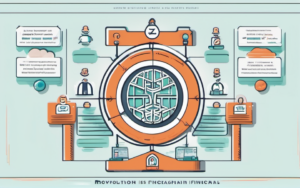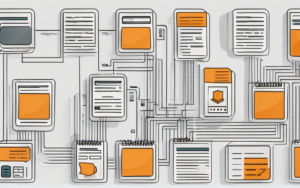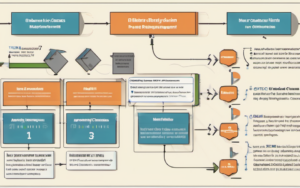Imagine a world where transactions happen directly between individuals, without the need for banks, intermediaries, or centralized authorities. This is the promise of blockchain technology, a revolutionary system that enables secure and efficient blockchain transactions without a middleman.
Decentralized Transactions: The Power of Blockchain
The Traditional Model: Centralized Control
For decades, transactions have relied on centralized systems. Think about banking: you deposit money into your account, which is held by a central bank. When you make a payment, the bank acts as an intermediary, verifying and processing the transaction. This model, while familiar, comes with drawbacks:
- Centralized control: Banks have significant power over your finances, and they can control access to your money.
- Fees and delays: Banks charge fees for their services, and transactions can take days to clear.
- Security risks: Centralized systems are vulnerable to hacks, fraud, and corruption.
Blockchain’s Disruption: Decentralization and Trust
Blockchain technology fundamentally changes the way transactions work. It eliminates the need for a central authority, creating a decentralized system where transactions are directly verified and recorded on a shared, immutable ledger.
Think of it as a digital record book that everyone can access, but no one can change. This shared ledger fosters trust, as it eliminates the need for a single entity to control and validate transactions.
Understanding the Blockchain Network
Nodes and the Distributed Ledger
A blockchain network is made up of numerous computers called “nodes.” Each node maintains a copy of the blockchain, which is a growing list of records, called blocks. These blocks contain information about transactions, and they are linked together chronologically, forming a chain.
Consensus Mechanisms: Ensuring Accuracy
To maintain the integrity of the blockchain, nodes use a consensus mechanism to agree on the validity of new transactions. This mechanism ensures that only legitimate transactions are added to the blockchain, preventing fraud and manipulation.
The Transaction Process: A Step-by-Step Guide
Initiating a Transaction
When you want to send money, you initiate a transaction by providing the recipient’s address and the amount you want to transfer. This information is then broadcast to the blockchain network.
Verification and Validation
Nodes on the network verify the transaction, ensuring that the sender has sufficient funds and that the transaction is valid. This involves checking the sender’s digital signature and ensuring that the recipient’s address is correct.
Adding the Transaction to the Blockchain
Once verified, the transaction is grouped with other transactions and added to a new block. This block is then broadcast to the network and added to the existing blockchain.
Confirmation and Finality
Once a block is added to the blockchain, it cannot be altered or removed. This process is known as “confirmation,” and it ensures that the transaction is permanent and irreversible.
Benefits of Decentralized Transactions
Transparency and Immutability
All blockchain transactions are publicly visible, allowing anyone to track the flow of funds. This transparency makes the system more accountable and reduces the risk of fraud.
Security and Reduced Fraud
The decentralized nature of the blockchain makes it extremely secure. Since there is no single point of failure, it’s difficult for hackers to compromise the system.
Efficiency and Cost Savings
Blockchain transactions are typically faster and cheaper than traditional methods, as there are no intermediaries to process and validate transactions.
Real-World Applications of Blockchain Transactions
Cryptocurrencies: Bitcoin and Beyond
Blockchain technology is best known for its use in cryptocurrencies, like Bitcoin. These digital currencies allow individuals to send and receive payments directly without the need for banks.
Supply Chain Management: Tracking Goods
Blockchain can be used to track the movement of goods throughout the supply chain, providing transparency and accountability. This can help businesses improve efficiency and reduce the risk of counterfeiting.
Digital Identity and Voting: Secure and Transparent
Blockchain can be used to create secure and tamper-proof digital identities, which can be used for online voting, identity verification, and other applications.
The Future of Blockchain Transactions
Scalability and Performance Improvements
As blockchain technology continues to develop, researchers are working on ways to improve its scalability and performance, enabling it to handle a larger volume of transactions.
Interoperability and Cross-Chain Solutions
The ability for different blockchains to communicate with each other is essential for widespread adoption. Researchers are developing solutions to enable interoperability and cross-chain transactions.
Emerging Applications and Innovations
Blockchain technology is still in its early stages, and there are many potential applications beyond cryptocurrencies and supply chain management. The future of blockchain transactions holds great promise for a more efficient, secure, and transparent world.
By eliminating the need for intermediaries, blockchain technology is revolutionizing the way we transact. This decentralized system offers a range of benefits, including increased transparency, security, and efficiency. As blockchain technology continues to evolve, we can expect to see even more innovative applications emerge in the years to come.




